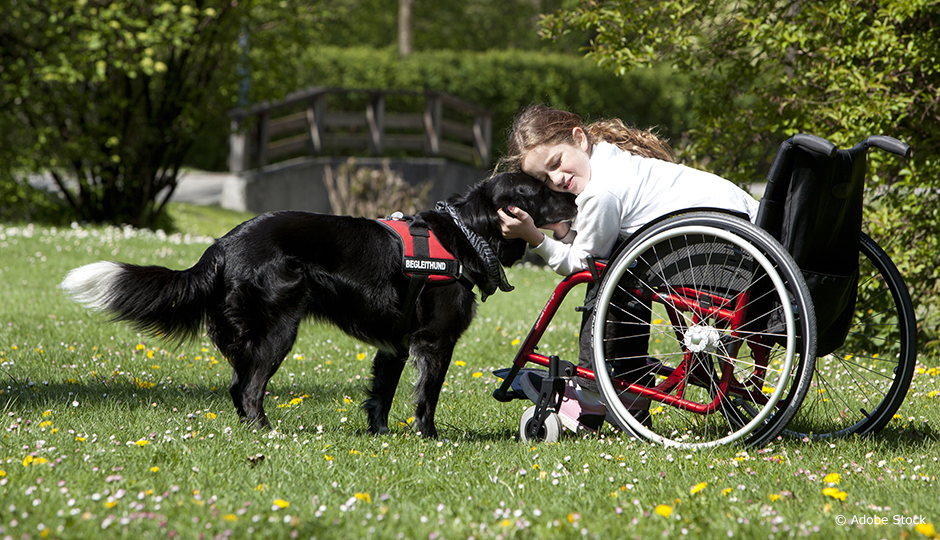Certain dogs become their owner's eyes. Others serve as their owner's legs or arms. In fact, the Mira Foundation provides four times more service dogs for people with motor disabilities than guide dogs. In 2010, a lack of scientific data validating the actual impacts of service dogs for users with a spinal cord injury who rely on a manual wheelchair (i.e. paraplegics) impeded the creation of a public animal cost reimbursement program.
A dog helps delay the use of a motorized wheelchair.
But the problem has since been solved. A study led by Claude Vincent, professor in the Department of Rehabilitation at Université Laval and researcher in the Centre for Interdisciplinary Research in Rehabilitation and Social Integration (CIRRIS), confirmed the benefits of service dogs for their owners: greater mobility, fewer injuries and better social reintegration.
Claude Vincent and her collaborators, including Dany Gagnon, professor at the School of Rehabilitation at Université de Montréal, met with 21 manual wheelchair users from across Québec before and after they were paired with a dog. Discussion groups brought together people in electrical wheelchairs and individuals with a motor disability who are able to walk. Among the study's conclusions, dogs were found to provide technical support, replacing reaching aids and caregivers for transfers to and from bed.
When a dog pulls a manual wheelchair, the user is better able to pass through doors and over curbs, hills and soft surfaces such as gravel, sand, grass, snow and slush. Users conserve their energy and experience much less shoulder and wrist pain. A dog also helps delay the use of a motorized wheelchair or three-wheel scooter, which, in addition to being heavy and bulky, cannot go everywhere. Clinicians are able to rely on these study results to recommend a service dog to patients.




